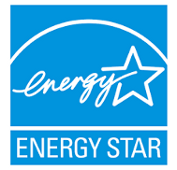
1. Introduction
Green Computing is the term used to indicate efficient use of resources in computing and by computing. Hence thare are two main variants of this term:
Greening of Computing
Greening of Computing is the term mainly used to indicate efficient use of resources in computing. In other words, Green Computing refers to environmentally sustainable computing. It is also the environmentally responsible use of computers and related resources. This term for the most part relates to the use of computing resources in conjunction with minimizing ecological effect, amplifying economic viability and ensuring social duties.
Computing for Greening
It is based on the observation that physical infrastructures like homes, offices and building make use of lot of energy. Computing for Greening comes up with ways to make this energy usage more efficient.
Green computing is very much related to other similar movements like decreasing the use of environmentally hazardous materials like CFCs, promoting the use of recyclable materials, minimizing use of non-biodegradable components, and encouraging use of sustainable resources.
In this series of lectures we will concentrate the first dimension of Green Computing, hence we will identify the Green Computing with Greening of Computing. However, at the end of this lecture we skech main problems and chalanges of Computing for Green.

In 1992, the U.S. Environmental Protection Agency launched a program called Energy Star. It is a voluntary program designed to promote and recognize energy-efficiency. Shortly after that the term Green Computing was coined. Energy Star served as a kind of voluntary label awarded to computing products that succeeded in minimizing use of energy while maximizing efficiency.
Energy Star applied to products like computer monitors, television sets and temperature control devices like refrigerators, air conditioners, and similar items.
Sleep mode
One of the first results was the adoption of Sleep mode function in consumer electronics which places a consumer's electronic equipment on standby mode when a pre-set period of time passes when user activity is not detected.
Microsoft Windows 2000 and later support sleep at the operating system level (OS-controlled ACPI S4 sleep state) without special drivers from the hardware manufacturer. Windows Vista's Fast Sleep and Resume feature saves the contents of volatile memory to hard disk before entering sleep mode. If power to memory is lost, it will use the hard disk to wake up. The user has also the option of hibernating directly if they wish.
According to European Commission's EC Regulation 1275/2008 from 6 January 2010 "off mode" and standby power shall not exceed 1W, "standby-plus" power (providing information or status display in addition to possible reactivation function) shall not exceed 2W. These numbers are halved on 6 January 2013.
Contemporary trends
As the concept developed, green computing began to encompass thin client solutions, energy cost accounting, virtualization practices, eWaste, etc.
This is a list of common Green Computing practices:
- turning off the monitor when it's not in use and using more energy efficient monitors like LCDs instead of the traditional CRT monitors
- using more energy efficient cooling systems (like using liquid cooling systems instead of the conventional heat sinks and fans)
- volunteer computing or file sharing practices
- virtualization of servers
- increased online security measures through the use of firewalls, anti-spyware and anti-virus programs to reduce the increasing amount of eWaste on the Internet and on other networks
- printing often unnecessary stuff is waste
Computer technology can be used to make the building more green using sensors, smart softwares, smart appliances and smart meters.
Smart Buildings
In order to make the building smart, there is a need to monitor the energy usage. The user must be able to control electricity usage by automatically properly scaling devices behavior (for example, switching it on and off). The environment must be monitored. Computing for Greening comes up with means to satisfy these needs cheaply and reliably. The Building Management Systems are existing systems that monitor the energy usage. However they are not fine-grained and do not provide pervasive load control mechanisms.
Monitoring Energy Usage
Energy usage can be monitored at multiple levels of the wiring tree right from the electricity ingress level to the outlet level. But transfering the data in real time is an issue. This transfer can be done using Wireless networking techniques like Zigbee and Wifi or using powerline networking techniques.
It is a Challenging task to place sensors at every load since its expensive, it may not look good and its unreliable due to the bandwidth constraints. Some Alternatives include collecting high bandwidth data at the ingress, disaggregating data into seperate loads by using well placed sensors.
Controlling Energy Usage
Programming load control switches are needed to control the energy usage. Generally the control involves switching a device on/off. The switching mechanism may be external or internal. An example of a wifi enabled washer and dryer has been provided. The control is provided by means of a mobile application. Probably solutions based on elements of Artifficial Intelligence will be available soon on the market.
Environment Monitoring
It include monitoring weather, temperature, tracking motion and so on. Energy usage can be implemented using recommendations via smart phones, enabling remote but manual control, automated scheduling policies. The main aim of the computing for greening is to optimize for lower costs, lower energy usage, lower peaks and aligning consumption with renewable generation.